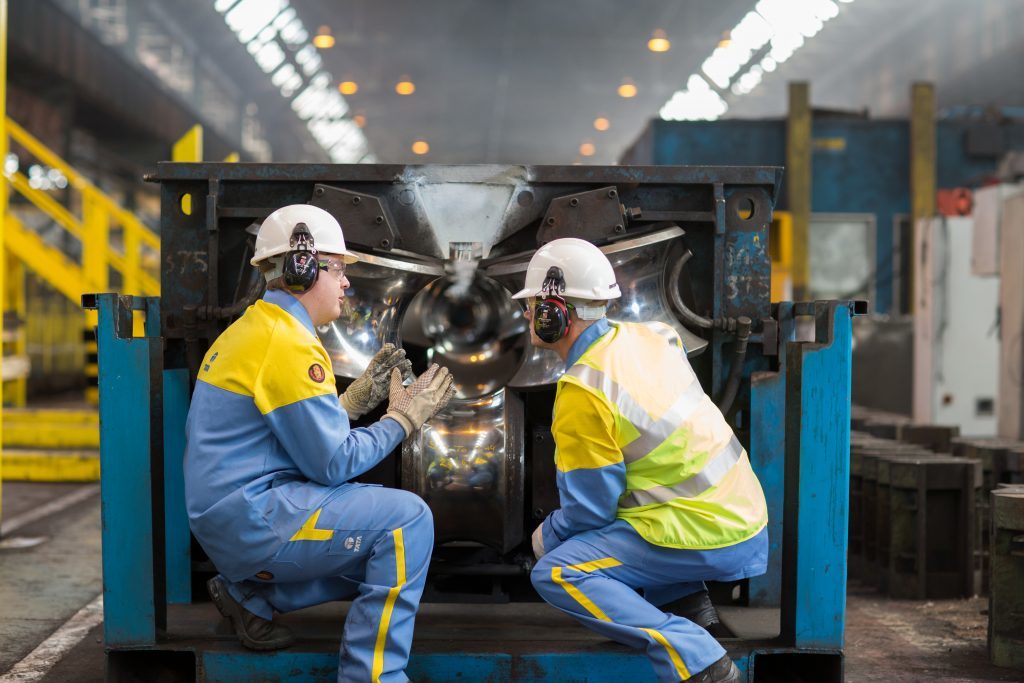
How do you turn green one of industry’s biggest energy users? For one U.K. steel magnate, the answer is to become the nation’s largest generator of renewable power.
As cheap imports erode Britain’s steel industry, Sanjeev Gupta plans to cut production costs at his Liberty Steel Inc. by doubling its collection of wind, hydroelectric and biofuel assets. The 46-year-old tycoon is spending almost $1 billion over the next three years on renewables, including the U.K.’s first subsidy-free windfarm, in a effort to be self-sufficient in energy.
It’s a radical approach to making one of the most polluting industries cleaner. The plan could also help the U.K. keep alive its steel industry, after competition and energy costs cut into the nation’s market share. Once the producer of about 40 percent of the world’s steel, Britain has only two primary plants still open.
“We want to see the sustainable growth of steel in the U.K. and the cost of energy is one aspect that needs to be addressed,” Jay Hambro, chief executive officer of Simec Energy Group Ltd., a subsidiary of the Gupta family’s GFG Alliance, said in an interview. “Our ambition is to generate as much as we consume.”
The 700 million pounds ($940 million) earmarked for renewable assets will boost Simec Energy’s green generation to 1 gigawatt by 2020. That’s enough to produce 5 million tons of recycled steel. For the moment, what the company doesn’t generate itself, is bought on the wholesale market.
Gupta has already has cut energy costs with 500 megawatts of renewable capacity, including biodiesel generators that burn waste fish oil and a hydropower plant in Scotland connected to an aluminum smelter. He’s also converting a Welsh coal station to run on biomass and waste. Earlier this month, Simec Energy joined up with tidal power developer Atlantis Resources Ltd. to develop renewables projects.
Subsidy-Free Wind
One venture is the first U.K. wind farm that won’t need government support. Simec Energy is keeping costs down at the 164-megawatt array of 40 turbines in Glenshero, Scotland, by building on its own land and providing the steel for some of the components.
Simec Energy is also buying 18 hydropower stations with a combined capacity of 40 megawatts in Scotland. That leaves 300 megawatts of projects to be developed.
U.K. industrial companies have some of Europe’s highest energy costs as the government levies an 18-pound tax on every ton of carbon dioxide emitted from power plants. That’s key for steelmakers, as electricity can account for almost half the metal’s production cost.
The rising cost of energy is “always a worry” for heavy industry, especially as contracts can be as long as 20 years, David Hostert, an analyst at Bloomberg New Energy Finance. Building your own generation is taking a bet that it will be cheaper to produce your own electricity than buy it, he said.
Click here to read what companies are buying renewable power
Simec isn’t the only company going down this route. Apple Inc. has committed to powering its operations with 100 percent renewable energy. Norwegian aluminum giant Norsk Hydro ASA is tied into a long-term power contract supply with Fosen, the largest onshore wind power project in Europe.
The drawback? Heavy industrial processes need a regular supply of power so some plants will need to be connected to the grid and buy power when the wind isn’t blowing.
Developing battery storage would be one way to counter that, said Jenifer Baxter, head of energy and environment at the Institution of Mechanical Engineers. But until that is possible, manufacturers can still work to be more environmentally friendly.
Making steel more sustainable is worthwhile as it’s a material that’s easily recycled and is a vital part of the automotive and aerospace industries, she said.
The U.K. exports 7.2 million tons of scrap steel and imports 6.6 million tons, Simec Energy’s Hambro said. The company plans to produce 5 million tons of recycled steel in the U.K. within five years, building on the 1.3 million tons it makes now.
“Whether the future is electric vehicles or driverless cars, what’s important is they will be made of steel and aluminum components and we want to be part of that market going forward,” Hambro said.
